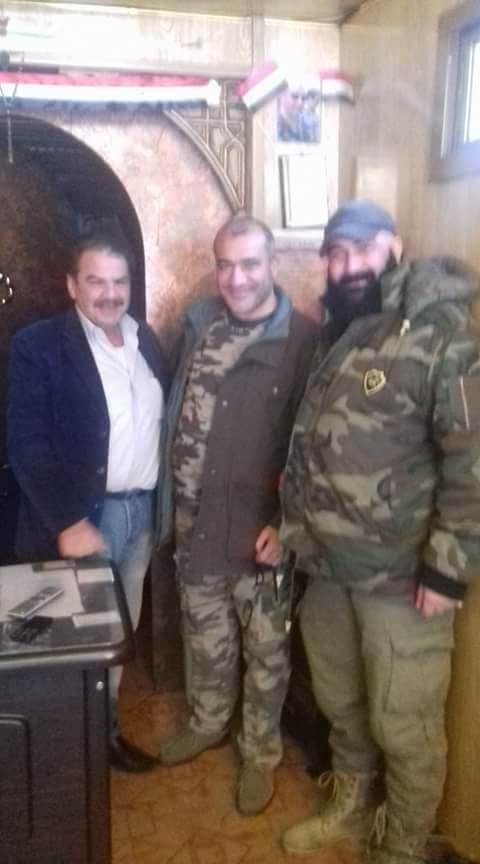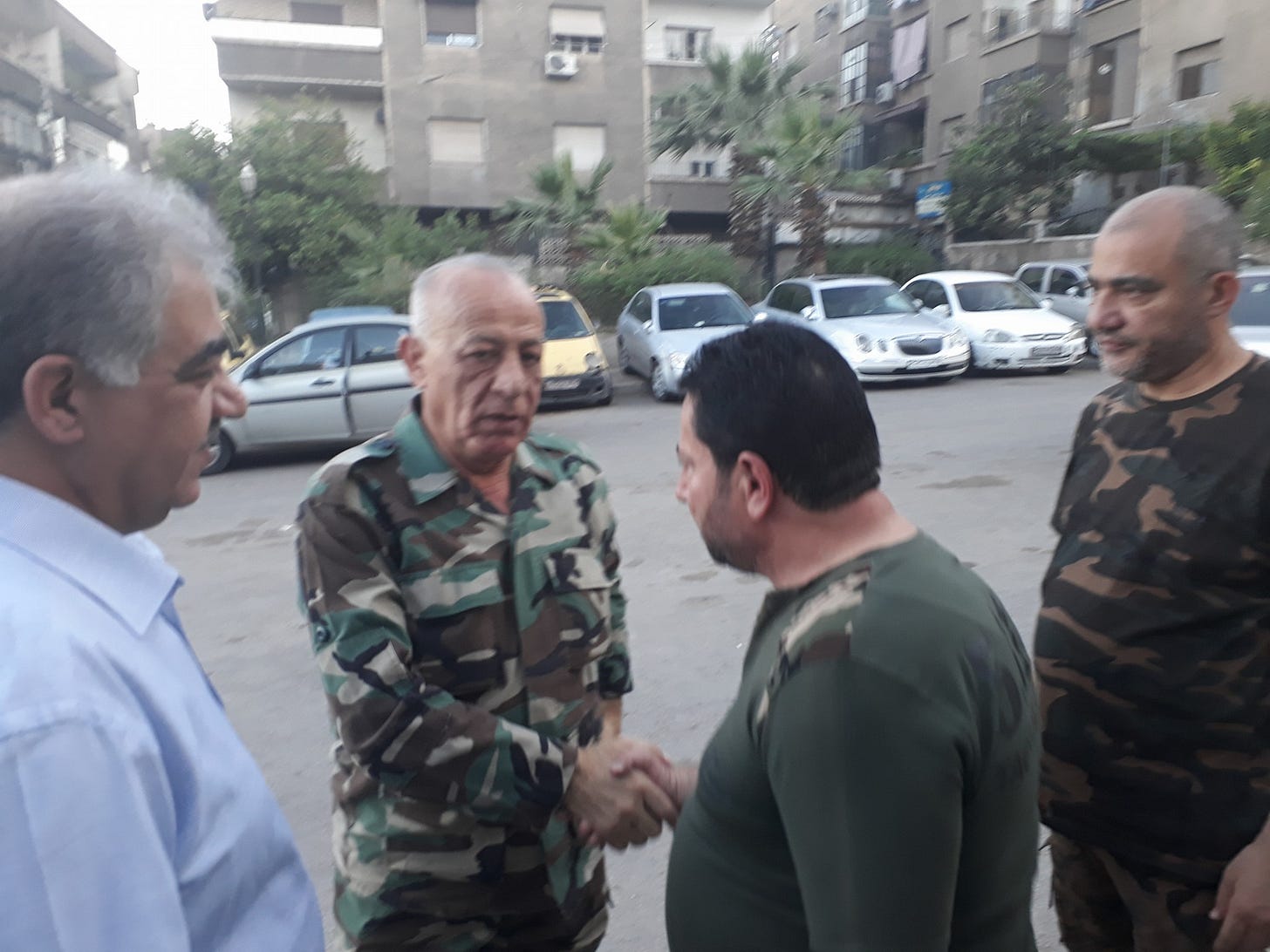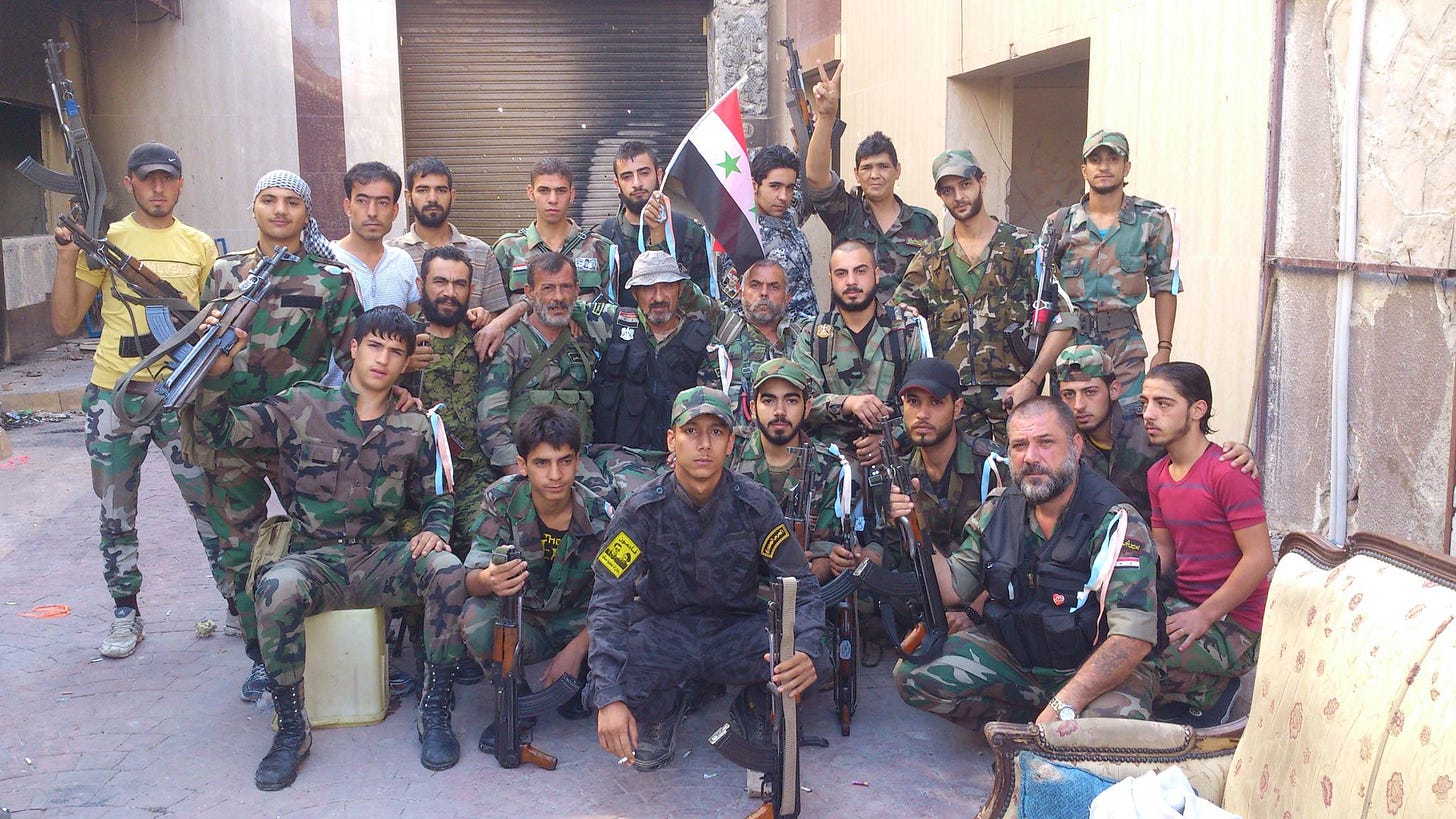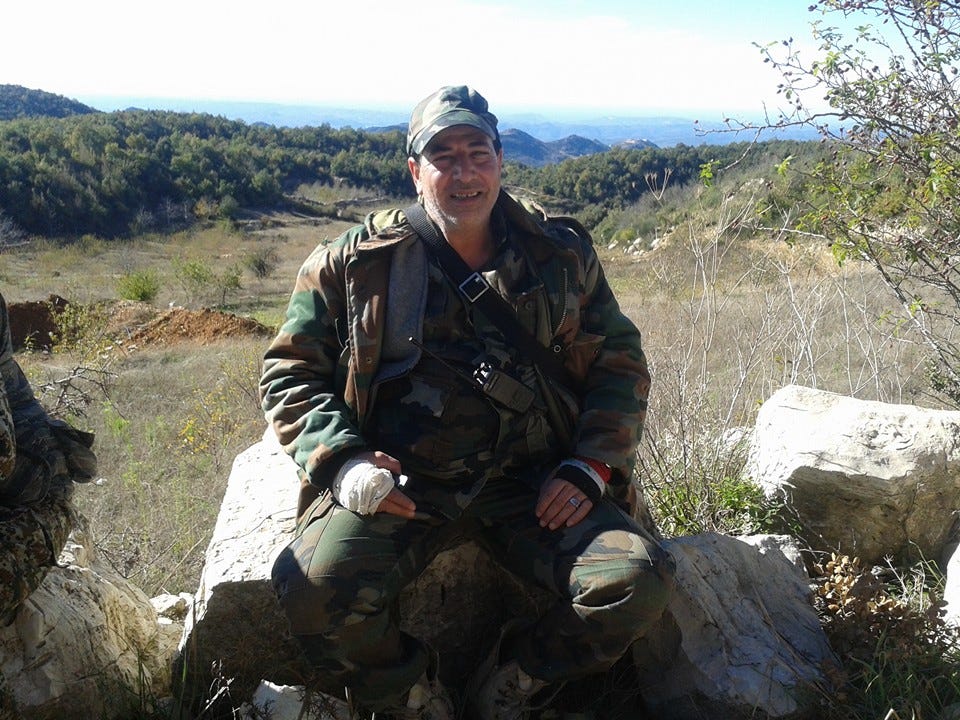The Shabiha of Rukn al-Din
How regime officers built militias out of an informant network, in their own words
The Syrian regime’s role in establishing and supporting local militias since 2011 is well documented, but the breadth of this activity always bears revisiting. Pro-regime militias were formed at every administrative level - from governorate down to neighborhood - transforming pre-war criminals and merchants into wealthy and powerful local figures. Such was the case in Damascus city’s Rukn al-Din neighborhood, where Kurds and Arabs, Shia and Sunni, lived before 2011. The people of Rukn al-Din were among the first to take to the streets in 2011, joining protests in adjoining neighborhoods and soon hosting their own. These protests were immediately attacked by local shabiha working for regime security services. Regime security officials soon began expanding and transforming the neighborhoods shabiha networks into several distinct militias, mirroring a process that was being undertaken across the country.
One of these original shabiha leaders described the origins of the neighborhood’s militias and their founders in a 2023 Facebook post:
“The first to establish the Popular Protection Forces in Rukn al-Din al-Assad, affiliated with the Guard (Qadesh) Baland Murad... Rafa’at Barazi (Da’as) and Agha Saher Ali Barazi, and with him were the heroic Issam and Khaled al-Kurdi, with Colonel Khader Khaddam... and the first building block of the heroic National Defense Forces, which were called committees, with the blessing of Major General Ghassan Nassour (Abu al-Basil), who was the commander of the Qalamoun sector... the heroic uncle Abu Jaafar Bassem al-Muhammad and Zakaria al-Ali (Abu Hussein), and the hero of the shadow Mazen Murtada... and the piercing star Dr. Ammar Kalou (Abu Sarbast) and the first group from which the hero Mohammed Nour Al-Waish and Ahmed Al-Bash were martyred... Our first place was opposite Salah Al-Din Mosque and the pictures speak for themselves... With the support of the hero Abu Al-Zain Ismail... and Brigadier General Commando Ali Al-Safi... and with the assistance of the Baath Battalions Tiger Diaa Mardini (Abu Mazen) who blessed us with a visit to the leadership with the brave men.”

This short history, written by Zakaria al-Ali and quickly deleted, provides a small glimpse at the complexity of early militia movements. Ali names three militias operating in the neighborhood, each just a small branch of a national organization. The Popular Protection Forces (PDF, also known as the Popular Defense Forces, or “Qadesh” as referenced in the post) created with the support of local Republican Guard officer Colonel Khader Khaddam; the National Defense Forces (NDF), with its authority granted by the Republican Guard officer Major General Ghassan Nassour and army officer Brigadier Ali al-Safi; the Baath Battalions, predating both of the other militia branches and providing Baath Party legitimacy via its local commander Diaa Mardini.
The first man listed in Ali’s post is Biland Nizar Murad, a member of a wealthy merchant family in the neighborhood. Documents obtained by the Observatory of Political and Economic Networks and shared with the author show that Murad registered a 37 million SYP transportation company with a Yemeni national in December 2011. Currently Murad is linked to the “Murad Company” - a regional petroleum distribution company - and the “al-Badea Investment Company” - an import-export business also involved in real estate, construction, tourism, and telecommunications. Given this background, Murad likely served as a key financier for the original shabiha networks and later both the PDF and NDF units inside Rukn al-Din.
Saher Ali Barazi has served as the commander of the Rukn al-Din PDF since founding the branch, presumably alongside his brother Rafa’at Barazi. Saher’s other brother, Samer Barazi, ran the Sahab Real Estate office next to the Salah al-Din Mosque, which would become the headquarters of the militia groups. According to some local activists, Samer was the head of one of the neighborhood’s shabiha networks in early 2012. This network included Saher as well as Khaled al-Kurdi, who is also referenced in the original post as a founding member of the PDF branch.

In the first years of the revolution these networks of local informants were closely linked to the Syrian Mukhabarat. Frequent visitors of Samer’s real estate office included al-Hajj Aboud, an informant for the State Security Internal Branch, Bassam Janad, a Military Intelligence informant, and Jihad Barakat, a mukhabarat informant operating in the adjacent Qaboun neighborhood. Mazen Murtada, referred to in the original post as “hero of the shadows” appears to have also served as a mukhabarat informant during the beginning of the revolution. According to opposition activists from Rukn al-Din, he and his brother, Ghazi Murtada, helped inform on and detain youth in the neighborhood and deliver them to the local “Jabhat Branch” intelligence office.
The state then turned to its various military branches to formalize these loose informant and enforcer networks. Here is where Zakaria al-Ali’s story begins, citing the role of three regime military officers in establishing the formal PDF and NDF branches of the neighborhood. Brigadier Ghassan Nassour served as the Republican Guard’s commander of the Qalamoun sector from 2011 until 2017, during which time he regularly commanded the local PDF units within his operations room. Lieutenant Colonel Khader Khaddam appears to have served under Nassour’s command, taking a more direct liaison role with the various PDF units in Rukn al-Din and the Qalamoun region. For example, a June 2015 video shows Khaddam at a PDF ceremony in Yabroud alongside the overall commander of the PDF Colonel Samir Dabbah Hassan, the Yabroud sector commander Colonel Youssef Shaqif, the Yabroud State Security branch director Colonel Mohammed Hashish, and officials from the Yabroud Reconciliation Center and local Baath representatives. This ceremony gives a small insight into the overlapping layers of state control over these local militias.
Ghassan Nassour also “blessed” the formation of the Rukn al-Din NDF, essentially providing legitimacy and the seal of state approval for the development of the unit. His involvement in both militias implies that the Republican Guard, and perhaps more specifically the 105th Brigade, was more broadly assigned to build and support militias in the Qalamoun and northern Damascus region. Army Brigadier Ali Ibrahim Safi played a more direct role in supporting the new formation within the umbrella of the NDF’s Damascus Center. Safi, who would go on to serve as the commander of the Damascus Countryside NDF Center, appears to have been charged with general command of NDF units in Damascus in the first years of the war.

There are several notable local figures connected to the Rukn al-Din NDF. Like Murad, Dr. Ammar Kalou also comes from a well-known merchant family in the neighborhood. Prior to the revolution, Kalou ran a health clinic in Rukn al-Din, and his family had no history of holding political positions. However, by early 2014 he had been appointed to the Damascus Governorate Executive Office where he has gone on to serve in various roles, including as a member of the Relief Subcommittee overseeing support for displaced persons, as director of the Social Affairs and Labor Office, and as assistant to the governor of Damascus. Throughout this time he has also served as the commander of the Rukn al-Din NDF, regularly visiting with soldiers on the frontlines across Damascus city and Eastern Ghouta.
Diaa Mardini has similarly gained local political power through his militia involvement. Originally the commander of the neighborhood’s Baath Battalions detachment, by 2017 he was serving directly under Kalou as Deputy Commander of the Rukn al-Din NDF. Mardini was a small time businessman prior to the revolution, owning a body building gym before leading the Baath Battalions branch. He was later accused by other Baath Battalions sectors of abuses against locals, and in 2018 secured a position in Damascus’ Local Council alongside his brother, Ramez Mardini.
Working closely with Dr. Kalou is Fayez Afash ‘Abu Adham’, the commander of the Rukn al-Din NDF Special Tasks Company. This is the core offensive unit of the Rukn al-Din NDF, deploying not just to Damascus city but across the entire country. Afash appears to have been the company’s first and only commander, retaining his position to this day. By late 2016 the company had already fought in northern Latakia, Palmyra, the Shaer Gas Field in Homs, and participated in the short-lived regime offensive to retake Raqqa. The unit also fought across Eastern Ghouta, including in the capture of Maydaa in 2016, Jobar and Hawsh al-Dawahra in 2017, and manning the Jobar axis during the regime’s final 2018 offensive to capture the pocket. In 2020 the group was even deployed to the Deir Ez Zor countryside as part of a broader deployment of Damascus NDF units to counter ISIS.
The story of Rukn al-Din’s militia movement underscores the regime’s multifaceted counter-revolutionary approach. Individual officers carrying the authority of the regime empowered previously civilian loyalists to enforce the will of the state in an area with mixed loyalties. These enforcement networks were then molded into various auxiliary units which could be directly employed by their state patron in military actions across the country. In exchange for their support and loyalty, the civilian leaders of these new state-backed armed groups have been awarded political positions. In essence, this new class of elite have turned their informal power into official power, now fully enshrined by the long-standing power structures of the Syrian regime.




